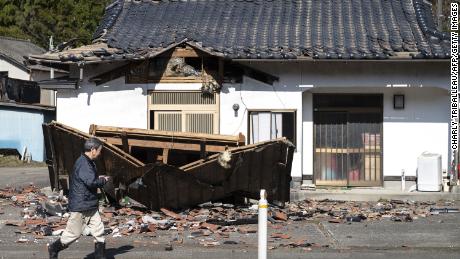What we know about the earthquake off Japan’s Fukushima coast

For some, the incident brought back painful memories of 2011, when an earthquake triggered a tsunami causing a nuclear meltdown at the Fukushima power plant, a disaster that’s still being felt to this day.Though the earthquake struck a similar area, Wednesday’s quake hasn’t prompted a national emergency — for a number of reasons.Here’s what you need to know.What, where, and when?The quake hit around 12:30 a.m. local time (11:30 a.m. ET) off the coast of Fukushima, north of the capital Tokyo. It was originally designated a 7.3-magnitude quake, but was upgraded to 7.4 on Thursday.As of Thursday, all tsunami warnings issued after the quake have been lifted. The epicenter of Wednesday’s earthquake was about 89 kilometers (55 miles) from the center of the devastating 2011 quake.Robert Geller, a seismologist and professor emeritus at the University of Tokyo, suggested Wednesday’s quake could have been a 2011 aftershock. “In geological terms, aftershocks will persist for 50 to 100 years, but as time goes on, the frequency of aftershocks and their size will diminish,” he said.In a tweet, the Prime Minister’s office said the government had established a countermeasure office that will work with local governments to carry out emergency measures including search and rescue of potential victims. Geller, the seismologist, said Japan can expect more aftershocks in the next week that will gradually taper off.Though he said there’s also a possibility that Wednesday’s quake was a “foreshock” before a larger earthquake, cautioning the chances of this happening are very low but “not zero.” “Yesterday’s earthquake is a good reminder for people in Japan to remember that Japan is earthquake-prone and that earthquakes can strike at any time,” he said. “So people should be prepared.”






